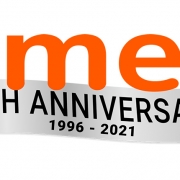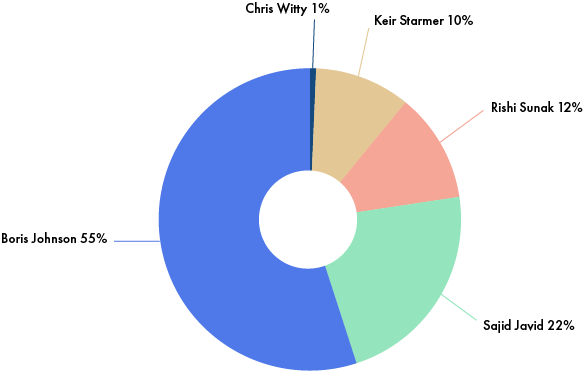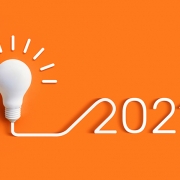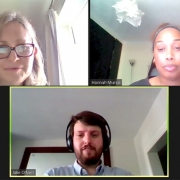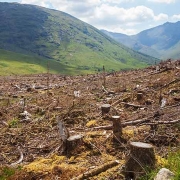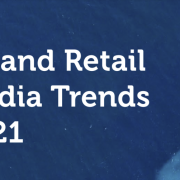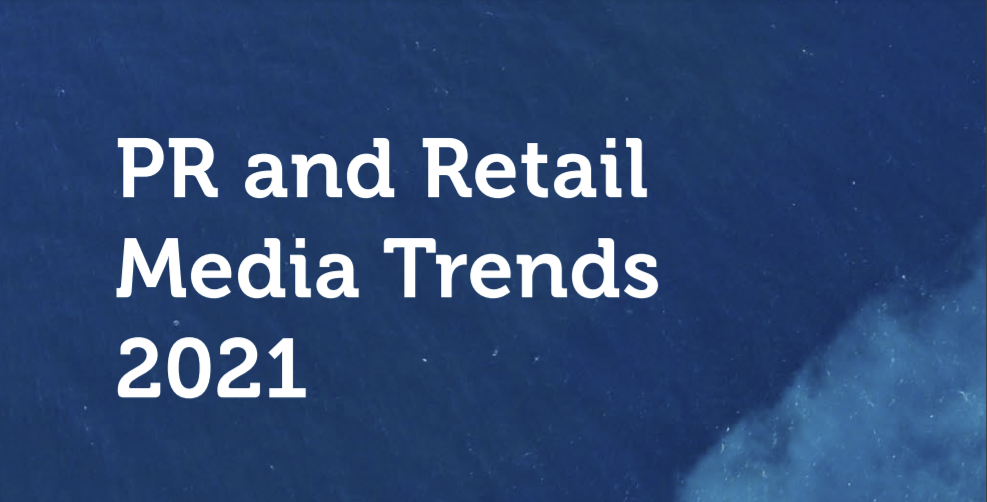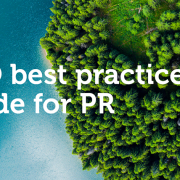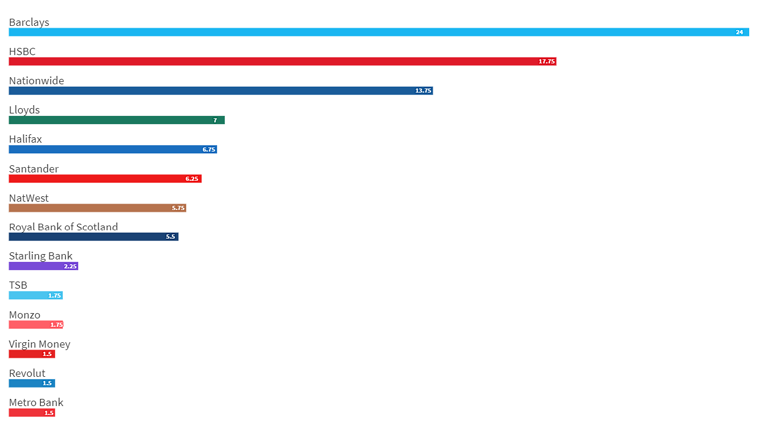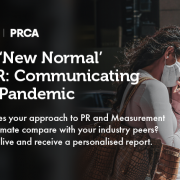Our virtual event Building better relationships between PRs and journalists featured advice and insight from the freelance journalists behind Journo Resources, Jem Collins and Faima Bakar, and Freelancing for Journalists, Lily Canter and Emma Wilkinson.
Watch Building better relationships between PRs and journalists here.
We ran out of time to answer all of the questions that came in during the session, but Jem, Faima and Lily have very kindly taken extra time out of their busy schedules of freelance commissions and supporting the freelance journalist community to give their take on them. Read on for their perception of PRs, why pitching over the phone is a no-go and where to find what journalists are actually looking for.
What is your perception of PRs in general? Do you find them helpful, or a hinderance to your work, when they show up in your inbox?
Jem: To be completely honest, a lot of time it is a hinderance. I have a separate inbox for my freelance journalism work, and honestly, it’s just like a constant avalanche of press releases. Right now, there are 786 unread emails in there, and I did a clear only the other day. Realistically, there is no way I can read all of these (let alone reply to them) and get anything else done, and the majority really aren’t relevant.
This isn’t to say that I think badly of PRs, it’s just the mass send out approach I find frustrating. The PRs I have the best relationships with are the ones who actually send me a personal email and really know what I do. I do appreciate that is a lot more work, and sometimes you do just have to get something out, but I really would stress how important the personalised approach is to building a relationship that actually works.
Faima: It depends on what they’re offering me – unsolicited PR emails can be annoying but sometimes they’re useful, I was more likely to read PR emails as a staffer as I was able to pick up stories of product launches/weird/quirky news which I can’t do as a freelancer. So there is no point sending the same things to freelancers as you would staffers. Now, these emails end up in my bin as they are just not relevant which can feel like a hindrance. However, they are helpful when they listen to what I’m after – which is interesting and unique case studies, and new research that can be turned into a feature.
Lily: If I am completely honest, I would love to go back to the times when you could talk to people directly, but that’s not the world we live in so I acknowledge that I need to work alongside PRs and they can be incredibly useful at times.
The best way a PR can work with me is to respond to my calls for help rather then fill up my inbox. I just don’t read these emails. Recently I put out a call via #journorequest on Twitter for an article I am writing for a running magazine. The PRs that got in touch were great at putting me in touch with exactly the right people to speak to. This was the ideal situation where PR worked well for me. Had they sent me a press release at any other time of the year the chances are I would have deleted it straight away. I get 50 to 100 PR emails a day, so I have to be pretty ruthless.
Do you think pitching over the phones is outdated? Would you prefer to be contacted via email?
Jem: Personally, I hate being pitched over the phone, but I think a lot of that is down to me being a freelancer and working from home. When you’re calling a newsroom, there are loads of people around and whoever isn’t busy will pick up the call, so it works. When it’s just one journalist at home, constant phone calls are just really distracting and you don’t get anything done. It’s especially frustrating when it’s not even a story on your beat – as a freelancer and business owner I do a lot of different things in a day and it’s actually just really intrusive. This isn’t to say that I’m not open to a chat, though – but I’d much rather someone send me a personalised email and ask to schedule in a time for a chat or a coffee.
Lily: I actually don’t like PRs pitching me ideas. My job is to find and report on stories not to be promoting the work of an organisation, so for me this actually undermines journalism. By all means work with me on a story I am developing but don’t tell me you have a story – you have something to promote, not a story.
For somebody that has joined the field mid-pandemic, do you have any tips on how to reach out to journalists and build relationships when communication is so difficult? What advice would you give to PRs for approaching a freelance journalist that they haven’t met/spoken to before in order to start building that relationship?
Jem: While I would very strongly urge against people pitching stories via Twitter DMs, I do think Twitter is quite a good way to get involved in the Twitter conversation. We all spend way too much time on The Bird App, so just getting involved in the conversation and being friendly will help me remember your name and come to you when I need anything. I’m forever grateful to the PR who saw me having an eczema flare up on there and sent me some cream that actually worked!
I’d also recommend the No 1 Media Ladies Facebook Group – they have a dedicated PR hours where you can intro yourself and your clients and it’s a really lovely community where people actually chat to each other and help each other out. You’re also very welcome to our Journo Resources Facebook Group, too! It could also perhaps be worthwhile coming along to some of the virtual workshops and events which are on at the moment – it’s a good way to not only get an in and connection with people, but also to see the kind of issues journalists are having at the moment.
Faima: Go for a personalised approach, ask them what their interests are, Google their work beforehand, see if your clients line up with their interests, show them how the two can work together. Maybe chat over a coffee?
Lily: It’s all about being useful to journalists and giving them what they need. Respond quickly to call outs and come up with the goods. Most of all: be honest and reliable.
Any tips on making sure that our emails are read by the journalist? For example, subject line, bullet points in the email, images?
Jem: The main thing for me is just being as clear and to the point as possible. As I mentioned before, I get a lot of PR emails and I don’t even work in a big newsroom. So, for me to open your email I need to know exactly what it’s about from the subject line of the email alone, otherwise I probably won’t get around to it. The other thing I would avoid is pretending something is personalised when it’s not – it really irks me when someone says this would be a perfect fit for my beat, or that they’ve tried to give me a call about it when they’ve not looked at my beat or tried to give me a call. Journalists just see through those kind of tricks and get annoyed!
Faima: I would put the most interesting thing in the subject line; is it an invite, is it new research, what’s the hook? Include images if you’re talking about something visual and links! The amount of times I’ve received a PR email, wanting to know more but they don’t provide links for more info, leaving me to Google information – which is not what you want.
Lily: Think like a journalist, not a PR. Write a headline that a journalist would write. Write a press release like a news story, not a press release. It might go against everything that you know/have been trained to do but journalists actually don’t like press releases and most of them are really badly written.
Be helpful when they are looking for information or sources. That really is your best way in. Emailing and asking to meet for a coffee will probably not work. Also never assume they are in London, that really winds a lot of freelancers up because many don’t live anywhere near London.
Do B2B and B2C journalists differ in what they want from a PR?
Jem: I’ve not really worked in B2B newsrooms, but I do genuinely believe the basics of good PR are basically the same. We’ve all got the same pressures, so we just want people who take a personalised approach, and are clear, concise and reliable.
Are you having the same types of conversations with journalists, or do they tend to be more structured/more formal? Do you still have relaxed chats and catch ups to chew over/discuss what’s happening?
Lily: Freelance journalists have informal chats, rants and moans in lots of online communities, especially on Facebook.
Aside from a media database (obviously!), would you recommend any websites or tools for finding the most relevant freelance journalists for the stories you’re wanting to pitch? And do you think PRs underestimate the importance of a freelance journalist in an age of where they have a greater role?
Jem: I definitely think that some PRs I’ve worked with haven’t quite realised the long game you get from working with a freelancers. Sometimes the requests I send out are for smaller places, and then I get very few people offering to help. But those are the people I’ll then go back to when I do get a bigger opportunity. A really lovely PR helped me out for a piece for a niche website on freelancing, for example, and when I got my next commission at The Big Issue, I went back to her first as I knew she was reliable, so I think it’s about seeing a bit more of the long game for your clients and coverage. Plus, freelancers mean you have the opportunity to pull in even more wins when it works out – we’re not just tied to one newsroom, we can go anywhere!
Faima: I would keep an eye out on the #journorequest tag on Twitter, and then go through that writer’s profiles to see what they cover. Usually when writers send out a request, they’re inundated with DMs/emails but usually they’re not relevant – so again, make sure you’re offering someone they can actually use. And remember that freelancers don’t need to stick with one publication, use that to your advantage – if your story is interesting, they can pitch it to a wide range of publications.
Lily: It is tricky as there are no comprehensive databases specifically focused on freelance journalists and it takes quite a bit of detective work checking bylines and social media profiles. MuckRack can be handy for seeing what journalists do and if they are freelance. And, yes freelance journalists play an increasingly large role in shaping the media landscape particularly in securing exclusive stories. Plus, they like to get more than one bite of the cherry from a story so if you work with them, an article could end up in multiple publications.
Is Twitter where journos put out requests most often? Are there any other places we should be looking for requests?
Jem: You do see a lot of stuff on Twitter, so would definitely be across that, but I’d also say the same for Facebook Groups too. I know I’ve banged on about them a lot today, but they are super useful! I also use the Journalist Enquiry Service a lot if I need an expert, so being across that can often be a quick win, and I do try and include as many people from there that I hear back from as possible.
Faima: Look out on Facebook Groups, I put out a lot of my requests on journo-friendly pages. I also read them on, as Jem mentioned, the No 1 Media Ladies Facebook Group.
Lily: Definitely keep track of #journorequest on Twitter. I also use niche Facebook sites but I will be looking for individuals and actually don’t want to do it via a PR in this instance. I also use the ResponseSource Journalist Enquiry Service quite a lot when I am looking for experts.
What’s the best way to find out specific interests of freelancers other than trawling through publications?
Jem: Journalists are pretty big on self-promotion (we can’t help ourselves) so I know it sounds simple, but a flick through social media is really helpful. When I do a news shift, I have to write eight stories a day, but I wouldn’t tweet them all out, because they’re not all stuff I’ve spent ages on, I just tweet the stuff I’m really proud of, so having a look at social can give you a good steer on what they’re actually really interested in. Similarly, looking at portfolio websites is also a good shout – again, people will just include their best bits and often have a line or two about their main beats.
Faima: Check out their websites – a lot of the more established journalists have their own websites or Linktrees. I have a Linktree of my most cherished articles which gives a good idea of what I’m interested in. You can search a writer’s name and type Linktree – it will come up if they have one.
Lily: You do need to do the work yourself in the same way that freelance journalists have to trawl through social media to identity commissioning editors to pitch to. Keeping track of the Freelance Writing Awards nominations could be a good way to start making a list of relevant freelancers.
Watch the full virtual event Building better relationships between PRs and journalists or read our round-up for more from Journo Resources and Freelancing for Journalists.
To find out more about the Vuelio media database and the ResponseSource Journalist Enquiry Service, check out our services and how they can help you in your work here.



